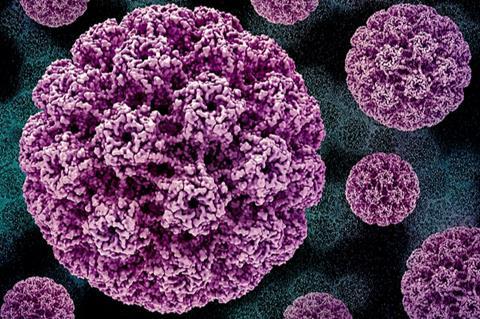A new global initiative is calling for a more ambitious, ethical and equitable approach that will see more boys and men gain access to cancer-preventing Human Papillomavirus (HPV) vaccination and protect more people worldwide from HPV-related cancers.

Launched by non-profit organisations, Global Action on Men’s Health and NOMAN is an Island: Race to End HPV, a new six-point plan calls for the World Health Organisation (WHO) and other health organisations and individual governments not currently providing equitable, gender-neutral vaccination (GNV) programmes to reconsider their position with the goal of achieving GNV for HPV worldwide by 2030. Over 20 influential organisations working in the field have already backed this call to action.
READ MORE: New vaccine against cervical cancer combines prophylactic and therapeutic activity
READ MORE: Men infected with high-risk types of HPV could struggle with fertility
The announcement is being made at a meeting held at the World Cancer Congress (WCC) in Geneva, Switzerland, where global leaders in oncology come together to learn about the latest successful cancer prevention, diagnosis, treatment and care interventions.
“To protect both women and men effectively, it is essential to vaccinate boys, as well as girls, and with political will, worldwide GNV is achievable by 2030,” said Peter Baker, Director, Global Action on Men’s Health. “Around 1 in 5 men worldwide carry a cancer-causing HPV infection. Men are much more likely to carry the virus, and to transmit it, than women.”
HPV is not a female-only problem
HPV causes around 5 percent of all cancer cases worldwide, with an estimated 180,000 cancer cases in men and 660,000 cases in women annually. While the narrative surrounding HPV vaccination has traditionally focused on women, it is essential the conversation now includes the need to vaccinate boys as well as girls.
Even though the most common HPV-related malignancy is cervical cancer, the virus can also cause many other types, including penile, anal and head and neck cancers. HPV vaccination programmes currently exist in 140 countries. Most of these programmes are in high-income countries, and only half are gender neutral.
“The clue is in the name; human papillomavirus not female papillomavirus, and we have the tools to protect everyone, regardless of sex or gender, from the cancers caused by HPV,” said David Winterflood, Director, NOMAN is an Island: Race to End HPV. “It is time for policymakers to follow the science and embrace the robust and overwhelming evidence of the public health benefits of HPV GNV. Not only do GNV programmes enable us to eliminate all HPV cancers faster, they are more resilient, simplify public health messaging and help de-stigmatise the falsehood that HPV is a female-only problem.”
The six-point plan
The six-point plan urges global policymakers to ensure equitable access to HPV vaccination among both boys and girls. Specifically, it proposes:
- HPV must be understood, and responded to, as a threat to the health of all sexes and genders.
- GNV should be viewed from the perspective of its potential to eliminate high-risk, oncogenic HPV types, thereby accelerating the elimination of not only cervical cancer, but all cancers caused by HPV.
- By 2028, global policymakers should have reviewed the issue of GNV with a view to recommending its implementation. WHO should include boys in the primary target population for HPV vaccination.
- By 2030, all countries currently without an HPV vaccination programme should have introduced HPV vaccination on a gender-neutral basis, while countries currently with a girls-only programme should have transitioned to GNV.
- Health partnerships between countries with established GNV programmes and lower-income countries should be established along with capacity-building initiatives to support the wider implementation of GNV.
- A greater focus is needed on increasing vaccine uptake to at least 90% for all, a target most likely to be achieved through school-based vaccination programmes.







No comments yet